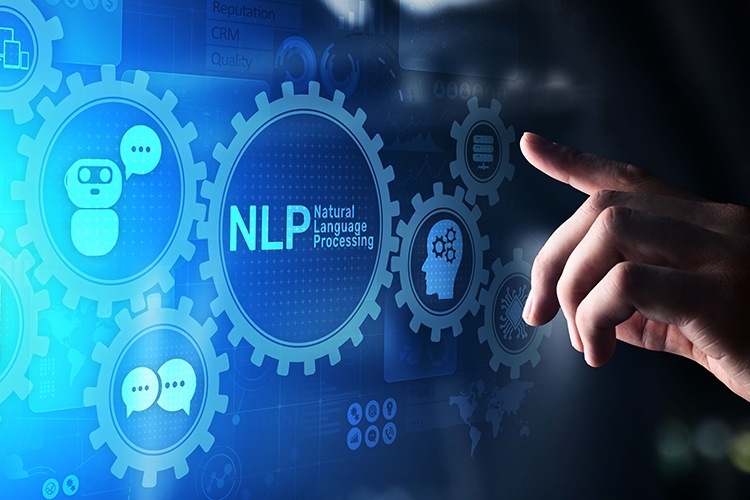By Adam Fisher, chief data officer
It’s not exactly a trade secret; anyone who’s ever filed a claim for insurance or benefits knows it entails a lot of forms and paperwork.
What’s in those documents, combined with the notes of the assigned examiner or adjuster, forms the building blocks of a claim file. For data scientists like me, that information translates into the potential for thousands of data points that can be analyzed and used to identify trends and generate reports.
In recent years, risk management information system (RMIS) providers and others in the insurance space have used structured data — which is clearly defined, usually quantitative and can be neatly manipulated — to populate automated dashboards and measure outcomes. However, unstructured data — like scanned documents, email messages and freeform notes — is mostly qualitative and has remained a largely untapped resource from a claims system perspective because of the time and effort required to extract information from them. That is, until now.
NLP: the new frontier
Natural language processing (NLP) is an application of artificial intelligence in which computers “read” and interpret digital information, much the same way a person would. The use of NLP can range from basic text processing to machine learning that enables computers to infer meaning from human language.
NLP technology has tremendous potential to bring greater efficiency and deeper insights to various aspects of claims management. I’d like to highlight a couple of NLP applications as examples of how this technology can improve our operational effectiveness and the care we provide to clients and their employees and customers.
Claims intake automation
Sedgwick has some U.S. clients who report new workers’ compensation claims via a dedicated email address. We have a team of colleagues that monitors that mailbox and manually enters all the claim details into our intake system. Depending on how many requests come into the mailbox on a given day, claims might be in the queue for several hours.
We’ve begun implementing a program that uses NLP to completely transform this process. For our pilot client, we’ve applied robotic process automation (RPA) to monitor the mailbox for incoming traffic. When a new message comes in, a “bot” saves the attached files and uploads them to our smart.ly platform. The bot uses NLP to read the documents and automatically extracts 93 pieces of information needed to initiate the claims process. This is far more sophisticated than simple digitization and optical character recognition (OCR); we’ve trained our system to accept a wide range of document formats and to match embedded information to the appropriate fields in label/value pairs with an extraordinary level of accuracy.
Once the system validates the extracted data, a new claim is created — all in less than a minute and without human intervention! Using NLP in this pilot has dramatically reduced turnaround times for intake, which means we can more promptly assign examiners to assist injured and ill workers following on-the-job accidents. We’re aiming to roll out this solution to additional clients in the months ahead.
Subrogation opportunities
At Sedgwick, part of our role is to investigate the circumstances surrounding a claim and identify who is responsible for covering the loss. Oftentimes, that’s our client; other times, it’s another third party. In cases where our client paid out a claim and we determine that someone else is the responsible party, we work to recoup the money through subrogation.
Clients are, of course, always pleased when these costs can be rightfully recovered; however, identifying claims where subrogation is warranted can be challenging. We have an excellent and experienced team of specialists who carefully review claims to identify possible recovery opportunities, but third-party responsibility is not often stated explicitly.
To help us better support our clients in identifying claims that can be subrogated, we’re developing a computerized model that, using NLP and machine learning, can review claim notes and documents for linguistic clues to third-party responsibility. We’ve built the model to look for references that may suggest another liable party, such as product malfunctions, dog bites and rear-end collisions. They’re the same clues our professional specialists look for — only a computer can read a lot more text in a lot less time. Preliminary tests show that the model is more than 70% as effective as a human at identifying claims that merit further investigation for subrogation.
What the future holds
These are just two of the many ways that NLP technology can bring value to and enhance claims management. We’re continually exploring new possibilities for leveraging our unstructured data (including more than 4 billion notes in our primary system for U.S. casualty and workforce absence claims!) to promote consistency and efficiency.
As these examples highlight, the intent behind the technology is not to eliminate human involvement; rather, it’s to automate mundane aspects of the process so that talented and caring professionals can better do what they do best. Using NLP for intake will enable our colleagues to focus their energy on strategic and empathy-driven aspects of customer service. Similarly, our NLP subrogation model will never replace our recovery experts. It’s designed as another tool that helps clients maximize subrogation opportunities and fairly assign responsibility for losses. Leveraging NLP to quickly scan thousands of documents and notes will allow us to make better use of our recovery specialists’ investigative skills and pursue more worthwhile opportunities.
The technology continues to evolve, and data scientists are gradually speaking more of natural language understanding than processing; however, the human element of claims is here to stay. At Sedgwick, our belief that “caring counts” means we’ll always have skilled, compassionate colleagues ready to assist when the unexpected occurs.
> Learn more — read about Sedgwick’s people first, tech forward and data driven digital experience.

